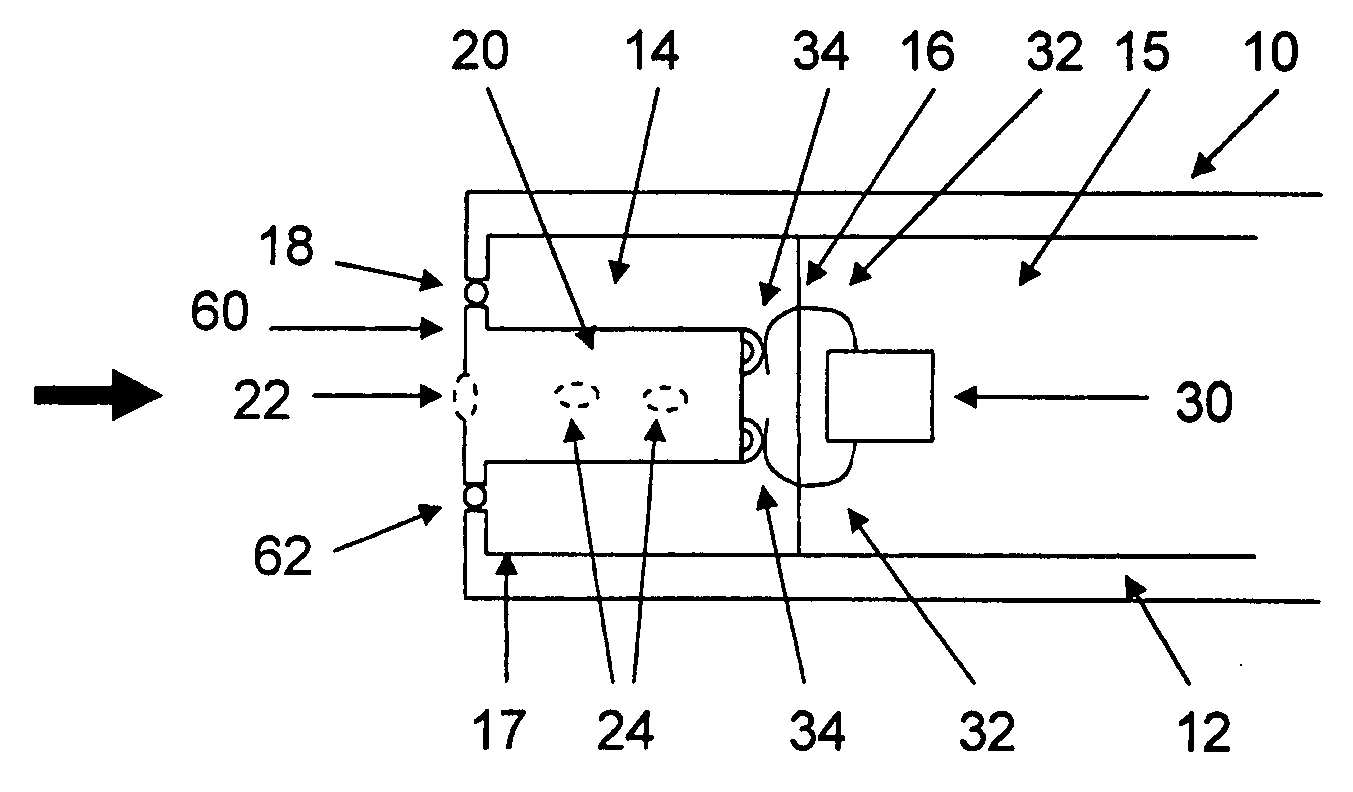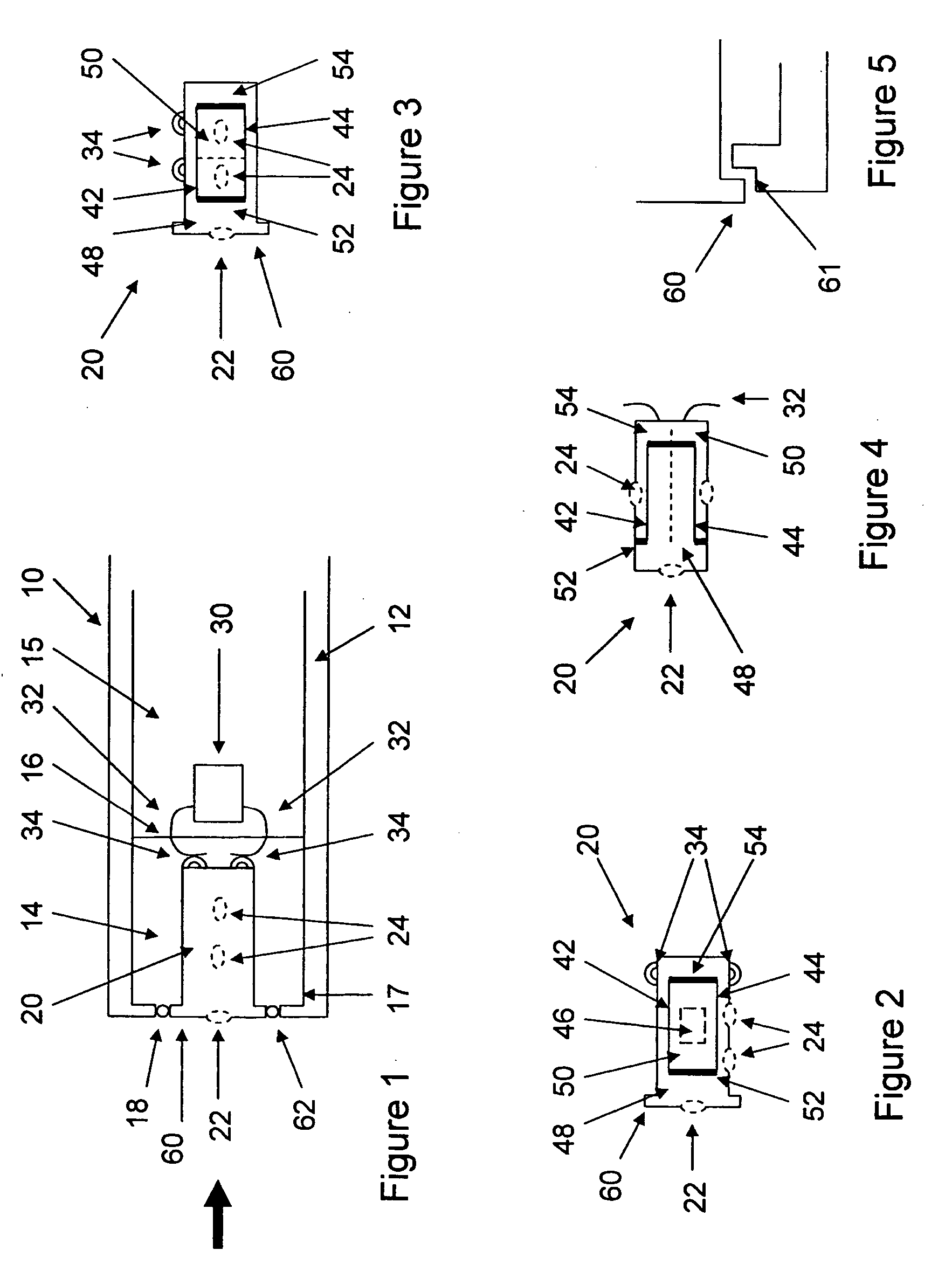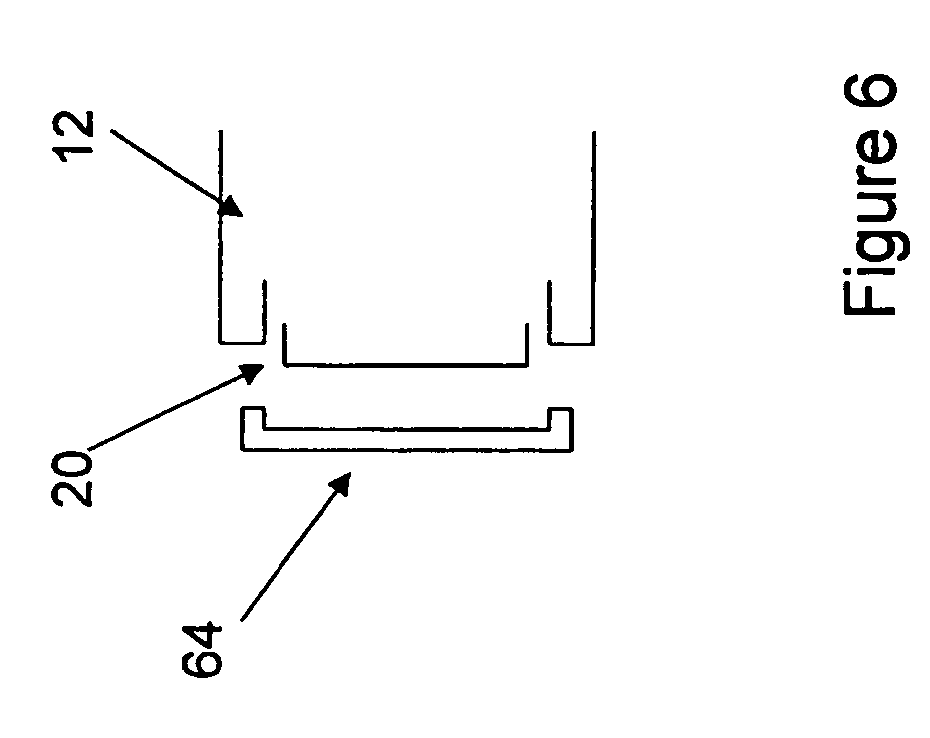Electroacoustic transducer mounting in shells of hearing prostheses
a technology of electroacoustic transducers and hearing prostheses, which is applied in the direction of electric transducers, electrical apparatus, specific frequency response details, etc., can solve the problems of difficult correct placement of resilient suspensions, limited space inside the hearing aid shell to accommodate resilient suspensions, and inability to meet the requirements of space requirements, etc., to achieve the effect of fast and easy assembly and assembly
- Summary
- Abstract
- Description
- Claims
- Application Information
AI Technical Summary
Benefits of technology
Problems solved by technology
Method used
Image
Examples
Embodiment Construction
[0100] In FIG. 1, the overall structure of a preferred embodiment of a personal communication device 10 is seen, having a housing 12 in which is mounted a hearing aid receiver or loudspeaker 20.
[0101] The present invention is able to reduce the overall dimensions of the system so that it is useful in CIC, ITE, and ITC hearing aids.
[0102] The housing 12 has an inner space that is divided into first and second inner compartments 14 and 15, respectively. The first inner compartment 14 is delimited by the housing walls 17 and an intermediate wall 16 providing an acoustic sealing between the compartments 14 and 15. The transducer element 20 is mounted in the space 14 so as to close or seal an opening 18 in the housing 12.
[0103] The transducer element 20 is adapted to receive or generate sound and has a sound inlet / outlet 22 exposed to the surroundings of the hearing aid 10 in the sound inlet / outlet port or opening 18.
[0104] The inner structure of the hearing aid receiver or transduce...
PUM
 Login to View More
Login to View More Abstract
Description
Claims
Application Information
 Login to View More
Login to View More - R&D
- Intellectual Property
- Life Sciences
- Materials
- Tech Scout
- Unparalleled Data Quality
- Higher Quality Content
- 60% Fewer Hallucinations
Browse by: Latest US Patents, China's latest patents, Technical Efficacy Thesaurus, Application Domain, Technology Topic, Popular Technical Reports.
© 2025 PatSnap. All rights reserved.Legal|Privacy policy|Modern Slavery Act Transparency Statement|Sitemap|About US| Contact US: help@patsnap.com



